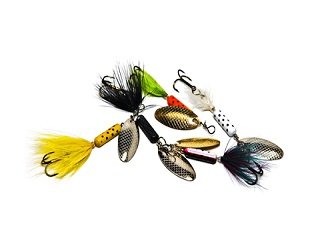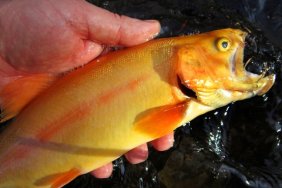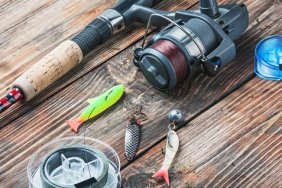 Ask any angler who’s spent time on the river seeking steelhead or trout what they’d recommend, as far as lures go, and the first thing out of their mouth would undoubtedly be inline spinners. Inline spinners from companies such as Mepps or Roostertail are popular in a variety of situations due to their effectiveness at catching fish, but what makes them so popular? We’ll explore that today and dive a little deeper in what exactly makes them work so well.
Ask any angler who’s spent time on the river seeking steelhead or trout what they’d recommend, as far as lures go, and the first thing out of their mouth would undoubtedly be inline spinners. Inline spinners from companies such as Mepps or Roostertail are popular in a variety of situations due to their effectiveness at catching fish, but what makes them so popular? We’ll explore that today and dive a little deeper in what exactly makes them work so well.
Most lures are designed to imitate a specific bait item. Crankbaits are made to look like baitfish species, jigs are made to imitate crawfish, and worms, well, that’s self-explanatory. However, when fish aren’t actively feeding on a given prey species, how do you get them to strike? This is where inline spinners excel, because they appeal to a fish’s natural instinct to strike at an unknown, flashy, intruder. They do this with the aid of the flash and vibration that their blades create in the water. Think of it like having a pet cat. You can only feed it so much before it gets full and doesn’t want to eat, but as soon as you whip out a toy, its energy seems endless and it will strike and pounce over and over.
While inline spinners are available in a seemingly endless amount of sizes and patterns, as a good rule of thumb, it’s best to match the size with the species you’re targeting, as well as with the tackle you’re using. For instance, smaller spinners will require a softer rod and lighter line to be used effectively.
Temperature will also play a role in which inline spinner you should go with, let alone when you should use them at all. When the water isn’t ideal for fish activity—too warm or too cold—they’ll rest to regulate their body temperatures, which makes enticing them difficult. At these times, it’s near impossible to attract them with a bait-imitating lure, but if you drift a spinner by—in all its flash and vibration—a fish will eagerly chase it down. It’s simply biology really; fish are programmed to strike on such occasions. Why not take advantage of it with an inline spinner?
Inline spinners have long been a staple lure in tackle boxes, and with good reason. Their versatility and deadly effectiveness at catching fish are priceless assets that any angler would benefit having in their arsenal. Whether you’re hitting the river for steelhead this winter or picking apart a farm pond in warmer regions of the country, inline spinners are hard to beat.








